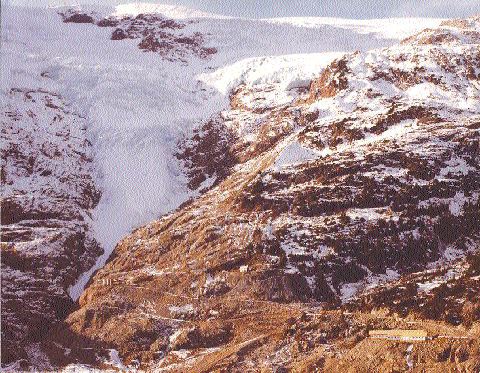Vancouver — Undergound drilling by
Gold exploration and mining have always helped define the region. Indeed, the resource-reliant Stewart-Iskut-Stikine River area has undergone a gread deal of exploration throughout its history, and these efforts have resulted in the discovery and development of several major mines.
Mining in the Stewart area began in the late-1800s, when prospectors arrived looking for placer gold strikes comparable to those that had been found in the Klondike. Although the hunt for nuggets never really panned out, hard rock exploration began to encounter significant occurrences of gold and silver, as well as base metals.
One of the first major mining operations was the aptly named Premier mine, which was initially staked in 1916 by Pat Daly and began producing in 1919. Premier was one of the richest gold mines in North America; the grade was so high that the cost of the mine was repaid in its first two years of production. When operations reached their peak in the late-1920s, there were more than 800 men working in a series of tunnels that stretched 17 miles. The mine was equipped with a 12-mile-long aerial tram-system for hauling ore to the mill. Premier was closed in 1950, when the underground ore was finally exhausted.
It was a few decades before mineral exploration picked up again, the peak being the late 1980s/early 1990s, when drill hole 109 resulted in the discovery of the high-grade Eskay Creek gold-silver deposit. The discovery was made by Murray Pezim’s Prime Resources group of junior companies, which was acquired by Homestake Mining in 1998. Homestake, in turn, was merged into
The Eskay Creek mine contained well over 3 million oz. gold and 150 million oz. silver. Much of the ore being mined currently is of such high grade that it is crushed and shipped directly to smelters, with no milling or concentrating required.
Prime was also involved in the development the Snip gold mine, about 90 km north of Stewart. Snip operated as a joint venture between Prime and
Premier was reactivated as an open-pit gold mine in 1989 and into the 1990s by partners
Tenajon’s latest exploration push is centred around the past-producing Summit Lake mine, where the target is potentially high-grade gold mineralization adjacent to the mine workings, as well as along strike and downdip. The Summit Lake mine produced almost 100,000 oz. gold over its 4-year life (1981-85), with grades averaging just under half an ounce of gold per ton, or 16.3 grams per tonne. At the time of closure, Summit Lake had a resource of 120,000 tonnes averaging 19.2 grams gold. Tenajon recently began a 1,200-metre program of underground drilling.
Elsewhere in the area,
In the northern portion of the region, 150 km northeast of Stewart,


Be the first to comment on "Gold explorers scour historic BC camp"